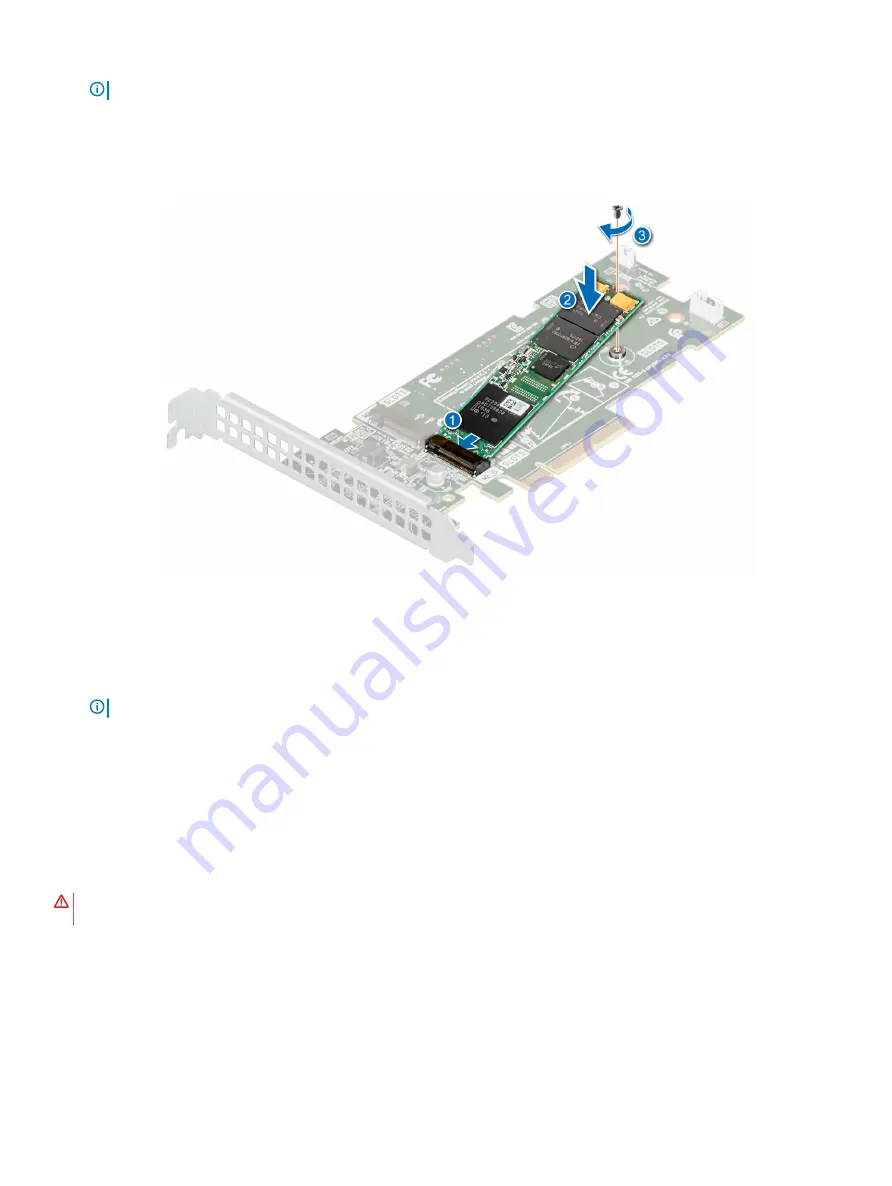
NOTE:
The procedure to remove the BOSS card is similar to the removing an expansion card.
Steps
1
Align the M.2 SSD module at an angle with the BOSS card connector.
2
Insert the M.2 SSD module until it is firmly seated in the BOSS card connector.
3
Using the Phillips #1 screwdriver, secure the M.2 SSD module on the BOSS card with the screw.
Figure 37. Installing the M.2 SSD module
Next steps
1
Install the BOSS card.
NOTE:
The procedure to install the BOSS card is similar to removing an expansion card.
2
Follow the procedure listed in the
After working inside your system
Processor and heat sink
Removing the heat sink module
Prerequisites
WARNING:
The heat sink may be hot to touch for some time after the system has been powered off. Allow the heat sink to cool
before removing it.
1
Follow the safety guidelines listed in
2
Follow the procedure that is listed in
Before working inside your system
Steps
1
Disconnect the heat sink fan power cable connector from the connector on the system board.
2
Using a Phillips #2 screwdriver, loosen the screws on the heat sink in the order following:
a Partially loosen the first screw (approximately 3 turns).
Installing and removing system components
67






























